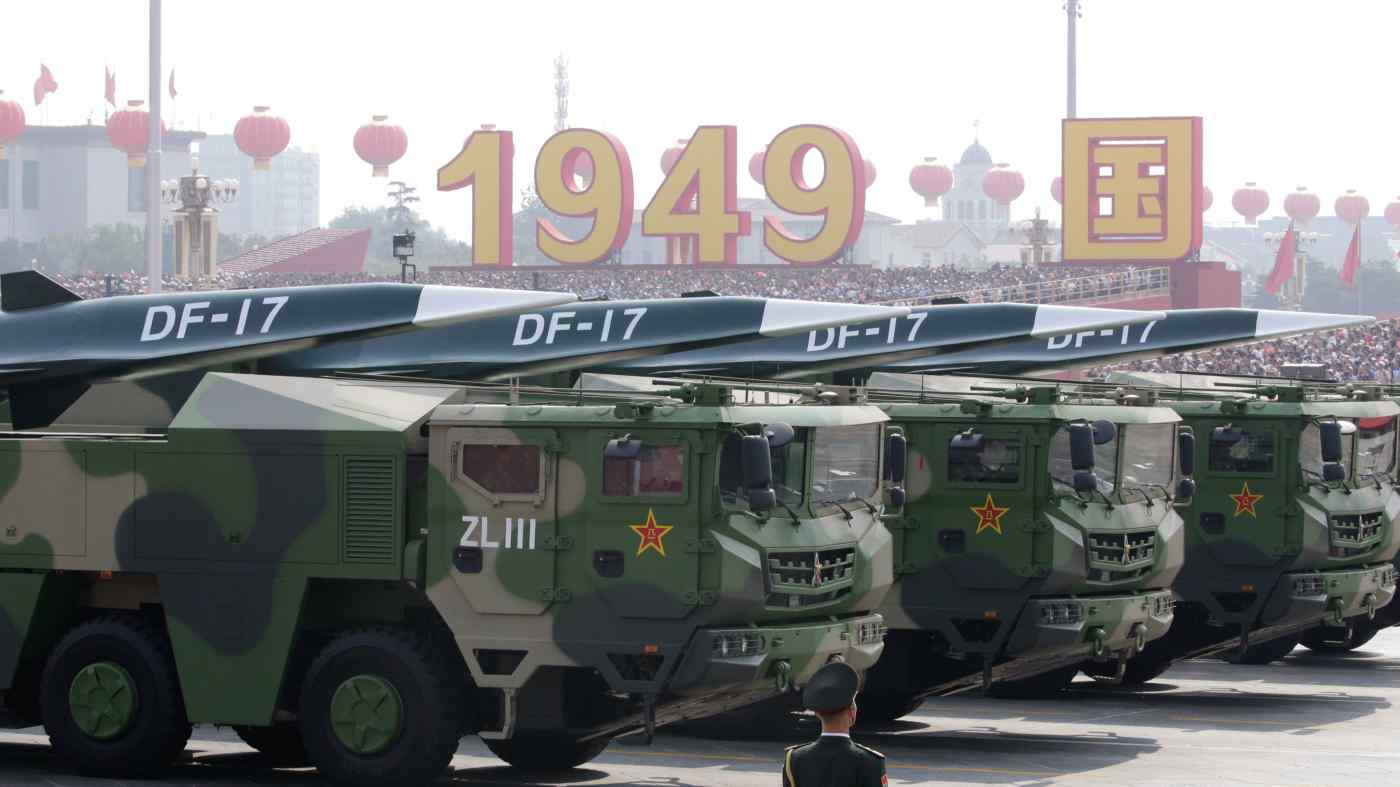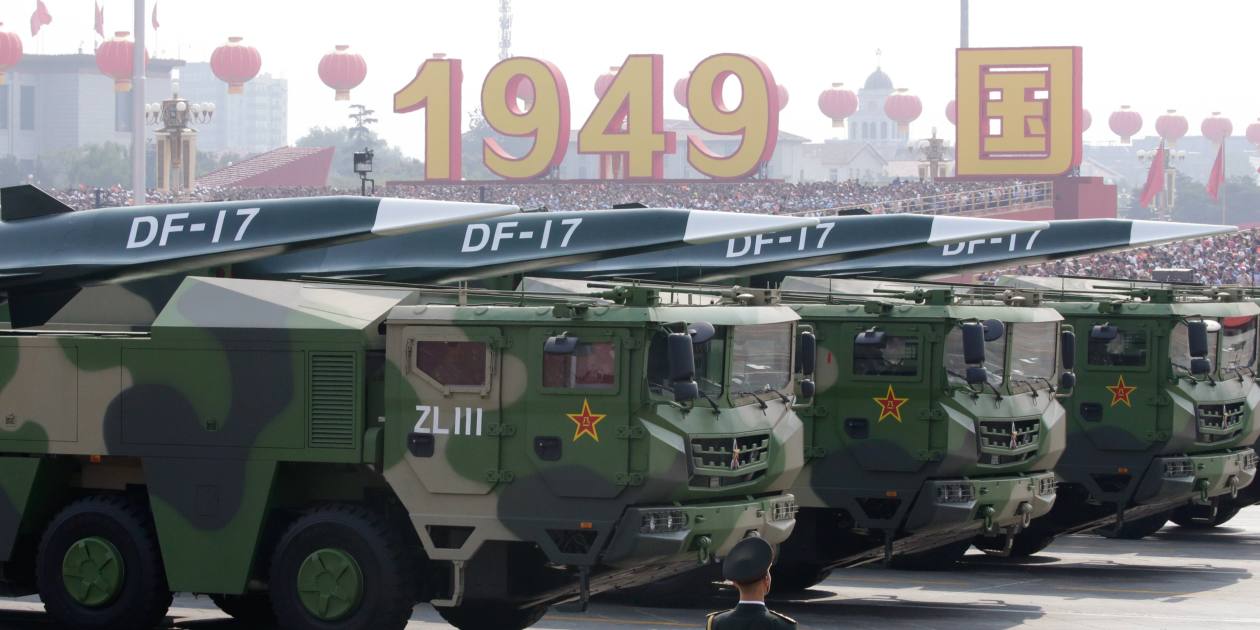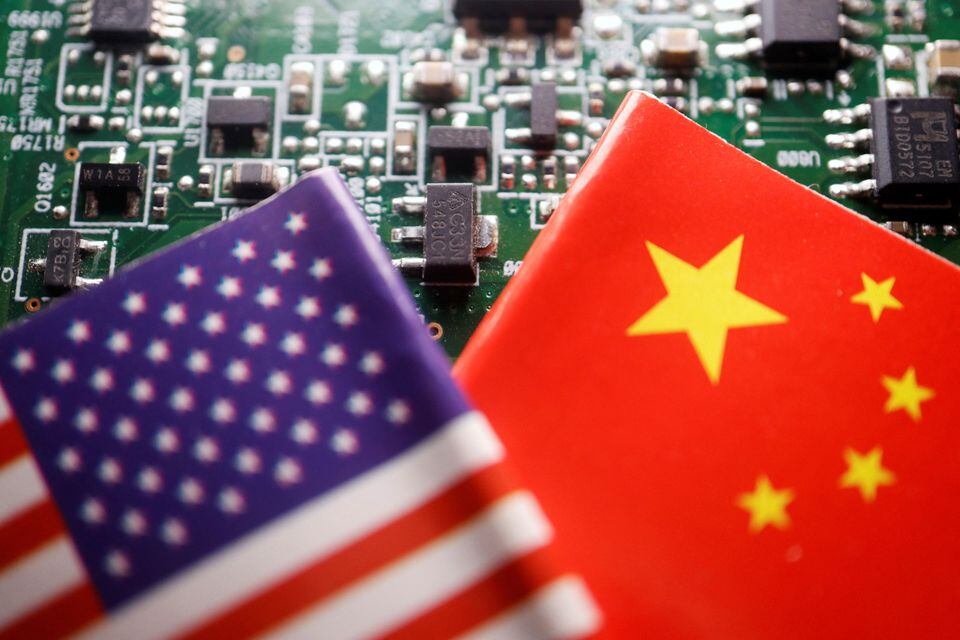beijingwalker
ELITE MEMBER

- Joined
- Nov 4, 2011
- Messages
- 65,195
- Reaction score
- -55
- Country
- Location
China leads high-tech research in 80% of critical fields: report
Aggressive investment puts country far ahead of U.S., Europe, Japan
Military vehicles during a parade in Beijing carry hypersonic missiles, one of many high-tech fields where China leads the world. © Reuters
KAORU TAKATSUKI, Nikkei staff writerSeptember 15, 2023 02:28 JST
TOKYO -- China leads advanced technological research in 80% of critical fields including hypersonics and underwater drones, a report from an Australian think tank shows, as the country pulls ahead of the U.S., Europe and Japan through state-led investment.
Out of 23 technologies analyzed by the Australian Strategic Policy Institute (ASPI), China leads research in 19. The rankings are based on the 10% most cited academic papers among 2.2 million published between 2018 and 2022, with a focus on fields considered key to the trilateral security partnership among the U.S., the U.K. and Australia, or AUKUS.
The U.S. leads in the remaining four technologies.
China accounts for 73.3% of high-impact research output for hypersonic detection, tracking and characterization, far ahead of the U.S., U.K. and Germany.
Hypersonic missiles, which fly at more than five times the speed of sound, are seen as a potentially game-changing weapon. China is developing hypersonic missiles that are faster and have less predictable trajectories in order to penetrate enemies' missile defense networks.
The ASPI report says there is a high risk of China dominating in the technology, considering how far it is ahead of its competitors and the concentration of institutions producing high-impact research in the country.
In autonomous underwater vehicles, China accounts for 56.9% of important research. Second-ranked U.S. accounts for just 9.5%.
Underwater drones incorporate a variety of cutting-edge technology, including pressure-resistant shells, unmanned navigation technology and communications systems. Based on the ASPI report, China also leads in advanced underwater wireless communications and in sonar.
Competition between the U.S. and China is closer in areas like artificial intelligence and quantum technology. Of the six AI-related fields, China has the lead in four, including drones, while the U.S. ranks first in advanced integrated circuit design and fabrication.
The countries each leads two of the four quantum technology fields. The U.S. has a narrow lead in highly sensitive quantum sensors, which are expected to have applications for quantum computing and medicine, while China has the advantage in post-quantum cryptography.
Beijing is showing that it is interested in gaining an advantage in critical technologies relevant to national security, according to ASPI Executive Director Justin Bassi.
The race between China and the West in critical technology is only intensifying.
China is promoting domestic high-tech industries through the Made in China 2025 initiative, unveiled under President Xi Jinping in 2015. It aims to become one of the world's leading manufacturing powerhouses by 2049, which marks the 100th anniversary of the founding of the People's Republic of China.
The initiative focuses on 10 fields in particular, such as new information technology including semiconductors, high-tech ships and numerical control tools for advanced robots.
Concerned by China's technological advancements, the U.S. under former President Donald Trump moved to cut Beijing off in fields like high-speed 5G communications.
Restrictions have strengthened further under current President Joe Biden. In August, Biden signed an executive order to restrict U.S. investment in China in fields like cutting-edge semiconductors, AI and quantum technology.
According to the ASPI report, Japan placed in the top 10 countries in just seven fields, including quantum computing and post-quantum cryptography.
Bassi stressed the importance of global cooperation to counter China's dominance, such as through frameworks like the Group of Seven, the Quad dialogue and AUKUS.
The G7 leaders' communique from the Hiroshima summit in May called for the circulation of talent in cutting-edge technology. Leaders of the Quad, which is comprised of the U.S., Japan, Australia and India, have also agreed to promote investment in critical areas such as quantum technology.

China leads high-tech research in 80% of critical fields: report
Aggressive investment puts country far ahead of U.S., Europe, Japan


